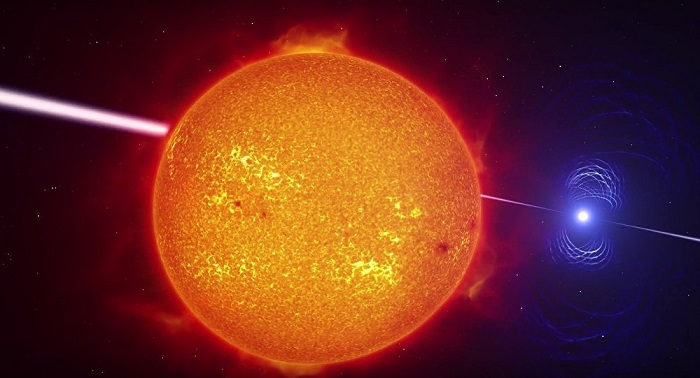"Fermi has detected only five of these systems in our own galaxy, so finding one so luminous and distant is quite exciting," reads a statement from the space agency.
"Gamma-ray binaries are prized because the gamma-ray output changes significantly during each orbit and sometimes over longer time scales. This variation lets us study many of the emission processes common to other gamma-ray sources in unique detail."
The binary system rests in a region of space known as the Large Magellanic Cloud.
The system was first spotted in 2012, but LMC P3 was misidentified as a high-mass X-ray binary. "The [normal] star is between 25 and 40 times the sun’s mass, and if we’re viewing the system at an angle midway between face-on and edge-on, which seems most likely, its companion is a neutron star about twice the sun’s mass," said Jay Strader, a member of the research, according to Raw Story. Gamma-ray bursts have also been useful for NASA’s Swift observatory to investigate a number of unidentified radio sources detected in outer space.
"We have investigated a group of unassociated radio sources included in the 3CR catalog to increase the multi-frequency information on them and possibly obtain an identification," reads the paper published in arXiv.org earlier this month.
Researchers spent four months observing gamma-ray sources, determining that nine sources feature a substantial emission in the soft X-ray band.
“"After conducting Swift observations of 21 bright NVSS [NRAO VLA Sky Survey] sources corresponding to 3CR sources classified as unassociated in the third update of the 3CR catalogue, we have obtained new X-ray detections for nine of them," the paper states. All in all, a good week for space exploration, and gamma rays in particular.
More about:
















-1741770194.jpg&h=190&w=280&zc=1&q=100)






-1741765030.jpg&h=190&w=280&zc=1&q=100)
























